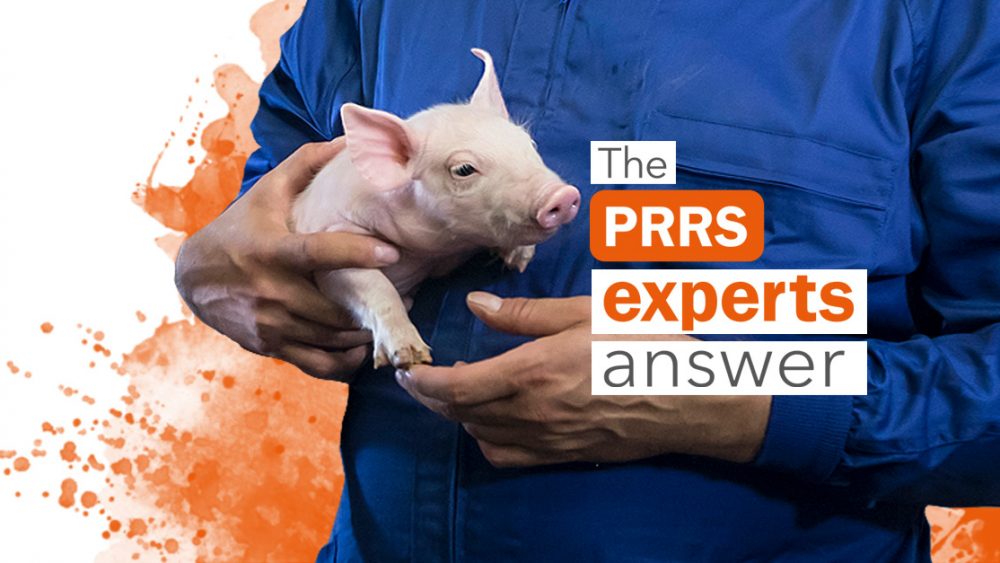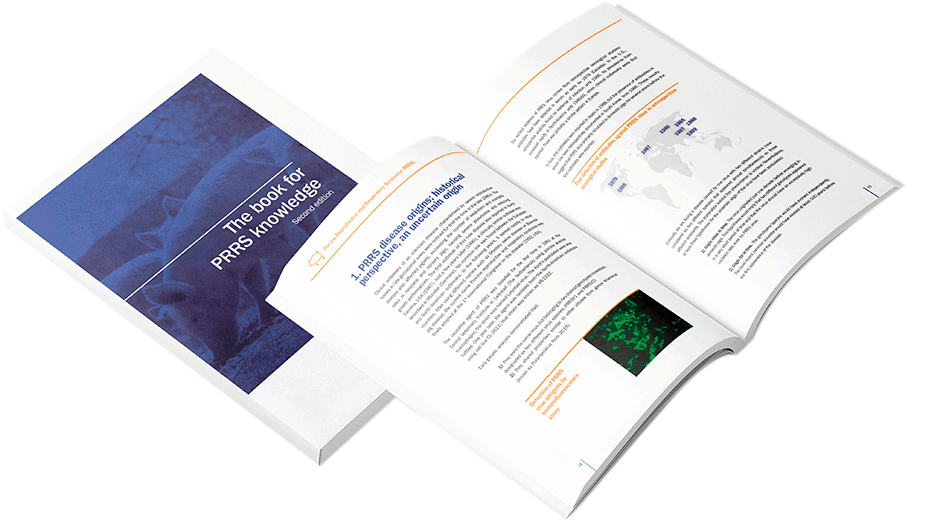Some farms are using 2 different PRRS vaccines (EU-type and NA-type PRRS live vaccines) in 2-week intervals for gilt acclimation. Does this help maximize the immune level of gilts against PRRSv? If the pigs are exposed to more PRRSv, do they have a broad range of cross-protection?
General aspects in PRRS live vaccine selection
In general, the selection of PRRSV MLV used to control PRRS is based on the PRRSV species circulating in that particular region.
For example, if a swine herd experiences a PRRSV-1 related outbreak, any available PRRSV-1 MLV can be used; while any PRRSV-2 MLVs can be used in a swine herd experiencing a PRRSV-2 related outbreak.
This is because of heterologous protection, which is obviously observed in a field situation. These criteria for PRRSV vaccine selection are well accepted worldwide.
Due to the fact that PRRSV species are genetically diverse, a homologous protection is obviously hard to confer. Sequencing data of the PRRSV isolates causing an outbreak is suggested and the genetic relationship between available MLV vaccines and isolates responsible for an outbreak should be considered.
However, a problem occurs in a herd or in a region where both PRRSV-1 and PRRSV-2 are concurrently circulating.
How do commercial PRRSv vaccines behave?
According to studies by Madapong (Madapong et al. 2017 and Madapong et al. 2020), any MLV, either PRRSV-1 or PRRSV-2, can be used in a co-infected herd. This is again because of cross protection.
Previous studies investigating immune response and protective efficacy of commercially available PRRSV MLVs (both PRRSV-1 and PRRSV-2) demonstrated that all PRRSV MLVs can induce a similar pattern of immune response (both humoral- and cell-mediated) but differences were found in the magnitude of the immune response, induction of IL-10 production, and interferon-gamma secreting cells.

Fig 1. Macroscopic lung lesions 7 days after HP-PRRSV2 challenge. (A) non vaccinated/challenged, (B) IM PRRSV1 vaccinated pigs, (C) ID PRRSV1 vaccinated pigs and (D) non vaccinated/non challenge pigs. Source: NCBI
All PRRSV MLVs provided cross-protection against heterologous PRRSV-1 and PRRSV-2 in a challenge in which the reduction of clinical signs, lung lesions, and viremia were observed.
Furthermore, the objective of mass vaccination with PRRSV MLV aims to stabilize the herd and minimize the heterogeneity of PRRSV isolates.
One or two PRRSv vaccines in the same farm?
When using only one MLV vaccine, regardless to the type of MLV, recombinations are less likely and so PRRS outbreaks, and only 1 PRRSV will become dominant in the herd.
We, therefore, recommend using only 1 PRRSV MLV on the farm starting from the sow herd to the finishing pigs, especially in the unstable herds with the co-existence of both PRRSV species, that involve subpopulations of animals.
Additionally, the co-existence of both PRRSV species in the herd leads to more heterogeneity of virus populations which might be enhanced by virus mutation and reversion to virulence.
In regards to concurrent vaccination with different PRRSV MLV species, according to a previous study by Park et al. (2015) , in which they studied the efficacy of concurrent vaccination of PRRSV-1 and PRRSV-2 MLV in weaned pigs against dual challenge with heterologous PRRSV isolates, results demonstrated that concurrent vaccination of PRRSV-1 and PRRSV-2 MLV can reduce PRRSV-1 viremia and lung lesions but this was not the case for the PRRSV-2 isolates.
In contrast, our recent findings indicate that concurrent vaccination with PRRSV-1 and PRRSV-2 MLVs induced more viremia, clinical signs, and a higher IL-10 level.
This suggested that the co-vaccination with PRRSV-1 and PRRSV-2 MLVs potentially causes a more adverse effect than vaccination with only 1 vaccine.
One thing to remember, besides to broaden cross protection, is that the IL-10 level is highest at 7-14 days post vaccination; revaccination with another PRRSV vaccine could affect the efficacy of the later vaccine and induce more IL-10, causing a cytokine storm.
The interference between PRRSV MLVs and other vaccines (M.hyo, swine influenza, classical swine fever, etc.) is well recognized.
If you want to know more about cross-protection experiences visit our cross-protection publications chapter.
You can ask your own question! Visit Pig333.com and submit your question to the experts.

Swine Viral Evolution and Vaccine Research Unit, Chulalongkorn University, Thailand.





